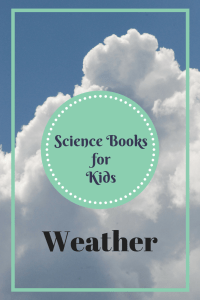Right in time for Women’s History Month, we have a wonderful new picture book biography, Breaking Through the Clouds: The Sometimes Turbulent Life of Meteorologist Joanne Simpson by Sandra Nickel and illustrated by Helena Perez Garcia.
Joanne Simpson’s story is one of perseverance. When she was a girl, Joanne discovered the joy of watching clouds. As she sailed in her boat– or flew in her plane in later years– she learned the importance of paying attention to the weather.
Joanne went to the University of Chicago about the same time World War II broke out. They needed someone to teach Air Force officers about winds, and Joanne an aptitude for weather, so they asked her to take over. Once the war ended, however, and Joanne decided to continue her studies, her professors didn’t agree. They told her:
“No woman ever got a doctorate in meteorology. And no woman ever will.”
Joanne wasn’t willing to give up. She worked hard.
She discovered so many important things that she was able to achieve her dreams.
Breaking Through the Clouds is a perfect choice for Women’s History Month, as well as for budding historians and budding scientists. Get inspired by a copy today!
Related Activities
1. Keep a weather journal.
Writing in a journal is a wonderful habit to start. You can keep a journal that is devoted to the weather or you can keep weather records in other kinds of journals.
This Scishow video discusses how to keep a journal and gives a few basics about weather.
2. Learn to identify clouds.
Being able to recognize and understand clouds can help in many careers that rely on the weather, from aviation (as mentioned in the book) to agriculture.
Some clouds form thin sheets high in the sky, like altostratus and cirrostratus.
Other clouds are piles, like cumulus clouds.
You can find guides online. For example, NASA has a Cloud ID sheet and activity guide to download (PDF).
Books, like the Peterson Field Guide To Weather (Peterson Field Guides) by Jay Anderson and John A. Day, may also help.
Want to learn more? Visit our growing list of children’s books about weather at Science books for Kids.
And for Women’s History Month, delve into some of the wonderful biographies of women scientists at Science Books for Kids.
Sandra Nickel says that story ideas are everywhere; you just have to reach out and grab them. She holds an MFA in writing for children and young adults from Vermont College of Fine Arts. Her first book, Nacho’s Nachos: The Story Behind the World’s Favorite Snack, was awarded a Christopher Award and was a Golden Kite Award finalist. Sandra lives in Chexbres, Switzerland, where she blogs about children’s book writers and illustrators at whatwason.com. To learn more, visit her website.
Twitter: @senickel
Facebook: @sandranickelbooks
Instagram: @sandranickelbooks
Check out the book trailer and activity/discussion sheets on the resource page!
Reading age : 6 – 9 years
Publisher : Abrams Books for Young Readers (March 8, 2022)
ISBN-10 : 1419749560
ISBN-13 : 978-1419749568
Disclosure: This book was provided by the publisher for review purposes. Also, I am an affiliate with Amazon so I can provide you with cover images and links to more information about books and products. As you probably are aware, if you click through the highlighted title link and purchase a product, I will receive a very small commission, at no extra cost to you. Any proceeds help defray the costs of hosting and maintaining this website.

Looking for more children’s nonfiction books? Try the Nonfiction Monday blog.

















